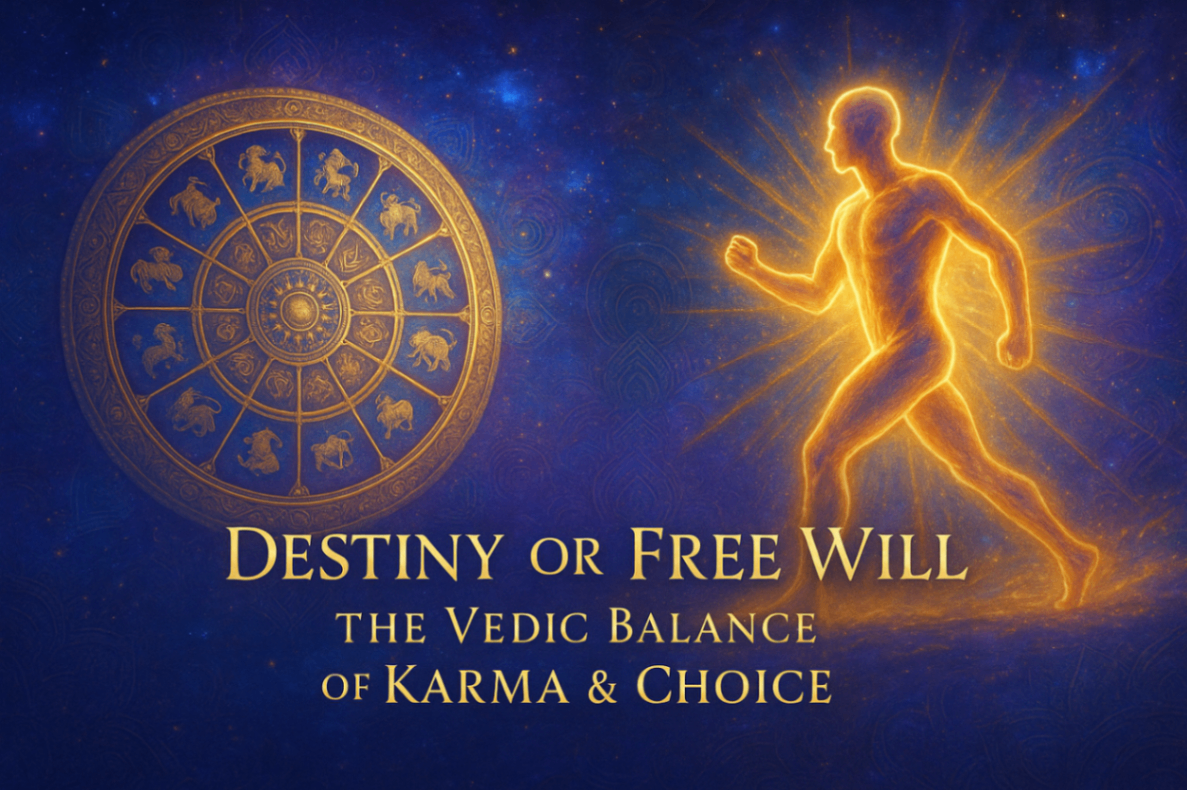Understanding Karma and Transcending Karmic Bonds in Vedic Astrology
Karma, a term widely recognized yet frequently misunderstood, roots deeply in the philosophical traditions of India, particularly within the context of Vedic astrology, where it serves as a fundamental principle explaining the law of cause and effect. This concept, although simple, is profound in its implications on individual lives and spiritual growth.
The Essence of Karma
In its simplest form, karma represents actions and their consequences. These actions can be physical deeds, spoken words, or even unexpressed thoughts. Each thought, word, and deed sets off a chain of cause and effect, ensuring that each individual will eventually experience the outcomes of their actions. This might not necessarily occur within the same lifetime; the effects could manifest in future lifetimes. This continuity across lifetimes is what forms the basis of samskaras or impressions on the soul.
Types of Karma
Vedic astrology delineates three main types of karma:
Sanchita Karma: This is the accumulated karma from all past lives. It represents potential events or experiences waiting to come to fruition.
Prarabdha Karma: This type of karma is part of Sanchita Karma that is ripe for experiencing in this lifetime. It is seen as inevitable and something that the individual must face and resolve.
Kriyamana or Agami Karma: These are the new karmic seeds we plant through our actions in the present moment. This karma can potentially be modified or completely altered through conscious action and spiritual growth.
Understanding these types helps in recognizing that while some experiences in life are predestined, others can be changed through our current actions and spiritual practices.
Karma and the Astrological Birth Chart
The astrological birth chart, a snapshot of the heavens at the time of an individual's birth, is said to reflect the Prarabdha Karma. The chart's configurations reveal the predestined conditions an individual is born into, as well as their strengths and challenges. However, by understanding their chart, an individual can work consciously to mitigate challenging conditions and enhance favorable ones.
Assessing Karma through the Tenth House
The Tenth House in Vedic astrology, known as the house of Karma, is pivotal in understanding an individual’s destined path in terms of career, reputation, and actions in the public sphere. A well-placed and beneficially aspected Tenth Lord suggests good karma from past lives, translating into success and fulfillment in professional life.
Conversely, malefic influences on the Tenth House might indicate challenges that need to be overcome, suggesting past actions that have led to complications that must now be addressed. For example, planets such as Rahu (North Node) and Ketu (South Node) in the Tenth House could indicate unconventional career paths that might either lead to significant innovation or disrupt life with unethical actions, depending on other aspects of the chart.
Transcending Karma through Spiritual Practice
While the birth chart reflects predispositions, it does not seal one’s fate. Vedic astrology supports the belief that through rigorous spiritual practice, an individual can alter their karmic path. This transformation occurs as the individual works to dissolve samskaras, the impressions from past actions that influence current desires and tendencies.
Practices such as meditation, yoga, and selfless service purify the mind and heart, helping to release these impressions and thereby reducing the influence of past negative karma. As one cleanses their samskaras, they not only begin to experience life more positively but also start creating more positive Kriyamana Karma, which will benefit future lifetimes.
Real-Life Stories of Karmic Transformation
Consider the story of a businessman who used unethical practices to achieve success. Facing a personal crisis that led him to spiritual awakening, he shifted his approach to his business and personal life, focusing on ethics and care for others. Over time, he not only found that his business continued to thrive, but he also experienced a deeper sense of fulfillment and peace, illustrating how changing one’s actions can transform one’s karma.
Similarly, mythological stories, such as the tale of King Mahabali from Hindu mythology, teach us about the impact of pride and the transformative power of humility and devotion. Despite his power and benevolence, Mahabali's downfall was his ego. His story is a powerful reminder of how spiritual humility can alter one’s karmic destiny, leading to spiritual liberation.
These stories, both real and mythological, underscore the dynamic nature of karma and the potential for change through conscious, conscientious living and spiritual growth.
Conclusion
Karma is not just a philosophical concept but a practical guide for living. By understanding the nature of karma and actively engaging in spiritual practices, individuals can transform their lives, transcending the cyclic nature of cause and effect to achieve both personal growth and spiritual enlightenment.
For those interested in exploring more about how to transcend karmic bonds, this video provides further insights:




















